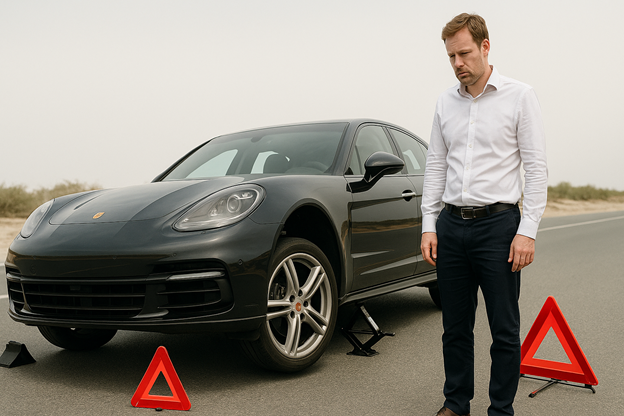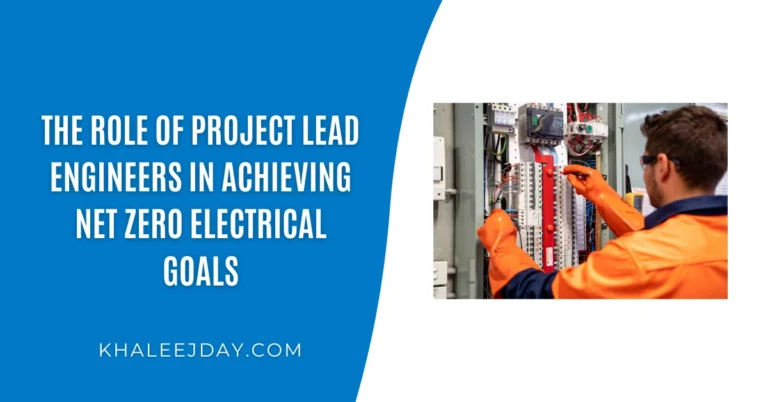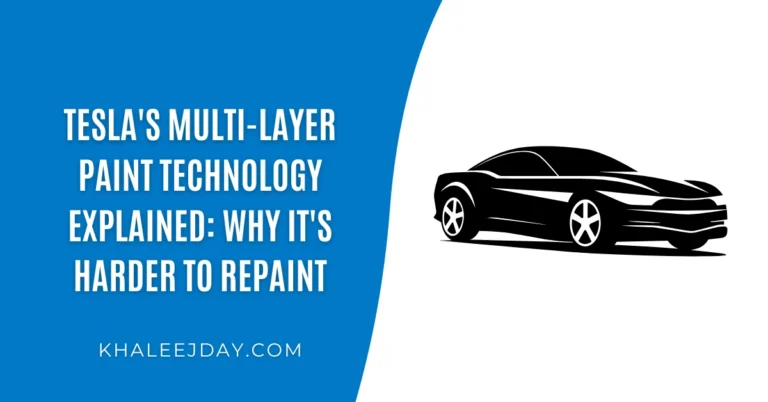5 Suspension & Steering Issues on Porsche SUVs in the UAE
The rugged terrain and extreme climate conditions of the UAE present unique challenges for Porsche SUV owners, particularly those driving the Macan and Cayenne models through Dubai’s urban jungle, Abu Dhabi’s expansive highways, and occasional off-road adventures in the Emirates’ diverse landscape. While these vehicles are engineered to deliver exceptional performance and comfort across various driving conditions, the combination of extreme heat, sandy environments, construction zones with rough surfaces, and aggressive driving styles common in the region can accelerate wear on suspension and steering components. Understanding the most prevalent issues affecting these critical systems enables owners to recognize early warning signs, implement preventive maintenance strategies, and seek appropriate professional intervention through qualified Porsche Repairs Dubai services when necessary.

1. Air Suspension System Degradation and Component Failures
Porsche SUVs equipped with advanced air suspension systems face extraordinary challenges in the UAE’s harsh environment. The sophisticated Porsche Active Suspension Management (PASM) and air suspension technologies, while providing exceptional ride quality and adaptability, incorporate numerous components that are particularly vulnerable to the extreme temperature fluctuations and environmental conditions prevalent throughout the Emirates.
Air springs, the cornerstone of these suspension systems, experience accelerated deterioration due to the constant thermal cycling between air-conditioned vehicle interiors and scorching outdoor temperatures that can exceed 50°C. The rubber and synthetic materials used in air spring construction gradually lose their elasticity and develop micro-cracks that eventually lead to air leaks and suspension sag. This degradation process occurs more rapidly in desert climates where UV exposure and ozone levels are elevated.
The air suspension compressor units work significantly harder in UAE conditions, as they must compensate for increased air spring permeability and maintain system pressure despite elevated operating temperatures. These compressors often run more frequently and for longer durations than in moderate climates, leading to premature wear of motor brushes, piston seals, and electronic control components.
Height sensors, critical for maintaining proper vehicle stance and ride quality, may experience calibration drift due to thermal expansion of mounting brackets and components. Sand particles, despite protective measures, can infiltrate sensor mechanisms and cause erratic readings that result in improper suspension adjustments and system error codes.
The sophisticated electronic control modules that manage air suspension operation can suffer from heat-related malfunctions when underhood temperatures exceed 80°C, a common occurrence during UAE summers. These modules process inputs from multiple sensors and control various actuators throughout the system, making their reliable operation essential for proper suspension function.
Common symptoms of air suspension problems include uneven vehicle stance, particularly noticeable when parked on level surfaces, sagging corners that develop overnight or after extended parking periods, unusual noises during height adjustments or when driving over bumps, and dashboard warning lights indicating suspension system malfunctions. Some owners report that suspension issues become more pronounced during extreme temperature periods or after driving in dusty conditions.
Preventive maintenance becomes crucial in UAE conditions, including regular inspection of air lines and connections, monitoring system pressure readings, and ensuring that height sensors remain clean and properly calibrated. When repairs become necessary, costs can be substantial, with individual air springs ranging from AED 2,500 to 4,500 depending on the specific model, while complete compressor assemblies may exceed AED 7,000. Working with experienced technicians who understand local operating conditions and utilize quality Porsche spare parts dubai suppliers ensures optimal repair longevity and system reliability.
2. Steering System Heat-Related Component Stress
The steering systems in Porsche SUVs, incorporating advanced technologies such as electric power steering and variable steering ratios, face significant challenges from the UAE’s extreme temperature environment. These sophisticated systems rely on electronic components, hydraulic fluids, and precision-manufactured components that can experience accelerated wear and reduced performance under prolonged high-temperature exposure.
Electric power steering systems, while more efficient than traditional hydraulic units, incorporate electric motors and control modules that generate heat during operation and must simultaneously withstand extreme ambient temperatures. The steering assistance motors may experience reduced performance or intermittent operation when internal temperatures exceed design specifications, leading to increased steering effort or erratic assistance levels.
Steering rack and pinion assemblies, even when properly lubricated, can experience accelerated wear when operating in extreme temperatures. The precision tolerances required for smooth steering operation may be compromised as components expand and contract with temperature variations, potentially leading to increased play, vibration, or binding sensations during steering input.
Power steering fluid, in vehicles still equipped with hydraulic assistance systems, degrades more rapidly under extreme heat conditions. This degradation can cause increased system operating temperatures, reduced lubrication effectiveness, and potential damage to pump components, seals, and steering rack internals. The high-pressure seals throughout hydraulic steering systems may harden or crack under prolonged heat exposure, leading to fluid leaks and reduced assistance.
Tie rod ends and steering linkage components experience increased stress from thermal cycling and the expansion of road surfaces common during UAE summers. These components must maintain precise geometry for proper wheel alignment and steering response, but thermal expansion and contraction can cause accelerated wear of ball joints, bushings, and adjustment mechanisms.
Electronic steering angle sensors and stability control integration components may experience drift or malfunction when subjected to extreme temperature conditions. These sensors provide critical input for various vehicle stability systems and must maintain accuracy for proper system operation, but thermal effects can cause calibration changes that affect overall vehicle handling and safety system performance.
Warning signs of steering system problems include increased steering effort, particularly during low-speed maneuvers or parking operations, unusual noises when turning the steering wheel, vibrations felt through the steering wheel during driving, and warning lights indicating power steering or stability system malfunctions. Some owners report intermittent steering assistance that correlates with extreme temperature conditions or extended driving periods.
Professional diagnosis requires specialized equipment to test electronic components, measure fluid pressures, and assess system calibration. Repair costs vary depending on the affected components, ranging from relatively minor fluid changes and seal replacements costing AED 400-800 to major steering rack replacements that may exceed AED 4,000.
3. Shock Absorber and Damper Deterioration
The sophisticated damping systems in Porsche SUVs, designed to provide exceptional ride quality while maintaining precise handling characteristics, face accelerated wear in the UAE’s challenging operating environment. These systems must cope with extreme temperature variations, aggressive driving styles, and road surfaces that range from smooth highways to rough construction zones and occasional off-road excursions.
Conventional shock absorbers and struts contain hydraulic fluid and gas chambers that can be affected by extreme temperature conditions. The viscosity of damper fluid changes with temperature, potentially altering damping characteristics during extreme heat or causing inconsistent performance as temperatures fluctuate throughout the day. Seals within shock absorber assemblies may deteriorate more rapidly under thermal cycling, leading to fluid leaks and reduced damping effectiveness.
Adaptive damping systems, such as Porsche Active Suspension Management (PASM), incorporate electronic controls and variable damping mechanisms that can experience malfunctions due to heat-related component failures. The electronic actuators that adjust damping rates may bind or fail when exposed to extreme temperatures, while the sophisticated control algorithms may not compensate adequately for the extreme operating conditions encountered in desert environments.
Magnetic ride control systems, available on some Porsche SUV variants, utilize specialized magneto-rheological fluid that can be affected by extreme temperature conditions. While these systems are generally robust, prolonged exposure to extreme heat may alter fluid properties and reduce the system’s ability to provide optimal damping characteristics across varying driving conditions.
Dust boot failures become more common in sandy environments, allowing contaminants to enter shock absorber assemblies and cause premature wear of internal components. These protective boots may crack or tear due to UV exposure and thermal cycling, compromising the internal mechanisms and leading to noise, reduced performance, or complete component failure.
Mounting hardware and bushings experience accelerated deterioration due to thermal expansion and contraction cycles. These components must maintain proper alignment and secure mounting of suspension components, but degraded bushings can cause noise, vibration, and altered suspension geometry that affects both ride quality and handling characteristics.
Symptoms of shock absorber problems include reduced ride quality with increased impact harshness over bumps, excessive body roll during cornering, nose dive during braking or squat during acceleration, unusual noises from the suspension area, and uneven tire wear patterns that indicate improper suspension geometry. Vehicle handling may feel less precise, with increased body motion during dynamic driving situations.
Regular inspection of shock absorbers and damping systems becomes essential in UAE conditions, including visual checks for fluid leaks, proper operation of electronic systems, and monitoring of suspension performance characteristics. Replacement costs vary significantly depending on the specific system, ranging from conventional shock absorber replacements costing AED 800-1,500 per unit to complete PASM system overhauls that may exceed AED 8,000.
4. Control Arm and Suspension Link Wear
The suspension control arms and various linkage components in Porsche SUVs must maintain precise geometry and smooth operation to deliver the exceptional handling characteristics these vehicles are known for. In the UAE’s demanding environment, these components face accelerated wear from thermal cycling, road surface variations, and the stress of frequent high-performance driving situations.
Upper and lower control arms incorporate ball joints and bushings that must operate smoothly while maintaining precise positioning of wheel assemblies. The constant thermal expansion and contraction experienced in desert climates can accelerate wear of these precision components, leading to increased play, noise generation, and altered suspension geometry that affects both handling and tire wear patterns.
Stabilizer bar links and end links, designed to control body roll during cornering, experience increased stress from aggressive driving styles common in the region. These components must operate smoothly through their full range of motion while transmitting substantial forces, but thermal cycling and dust infiltration can cause binding, noise, or complete failure of link assemblies.
Suspension bushings throughout the system, typically manufactured from rubber or polyurethane compounds, may harden or crack under prolonged exposure to extreme temperatures and UV radiation. These bushings provide compliant mounting points that absorb vibration and allow controlled movement of suspension components, but deteriorated bushings can cause noise, harshness, and imprecise handling characteristics.
Wheel bearing assemblies, while not strictly suspension components, work in conjunction with suspension systems and face particular challenges in sandy environments. Fine particles may infiltrate bearing seals and cause premature wear, while thermal cycling can affect bearing preload and operating characteristics.
The precision ball joints used throughout Porsche SUV suspension systems require consistent lubrication and protection from contaminants to maintain smooth operation. In UAE conditions, these joints may experience accelerated wear due to dust infiltration and thermal stress, potentially leading to dangerous handling characteristics if not addressed promptly.
Common symptoms include unusual noises during steering or suspension movement, particularly clicking or creaking sounds during low-speed maneuvers, vibrations felt through the steering wheel or vehicle structure, uneven tire wear patterns that indicate suspension misalignment, and handling characteristics that feel less precise or predictable than normal.
Professional suspension inspection should include comprehensive evaluation of all control arm components, ball joint play measurement, bushing condition assessment, and wheel alignment verification. Repair costs depend on the specific components requiring attention, ranging from individual ball joint replacements costing AED 300-600 to complete control arm assemblies that may exceed AED 1,500 per side.
5. Electronic Stability and Steering Assistance System Malfunctions
Modern Porsche SUVs incorporate sophisticated electronic systems that enhance both safety and performance, including Porsche Stability Management (PSM), electronic steering assistance, and various driver assistance technologies. These advanced systems rely on numerous sensors, control modules, and actuators that can experience reduced reliability when subjected to the extreme operating conditions prevalent throughout the UAE.
Wheel speed sensors, critical for proper operation of PSM and other stability systems, may experience reduced accuracy or complete failure when exposed to extreme heat and dust conditions. These sensors must provide precise information about individual wheel rotation speeds, but thermal drift or contamination can cause erratic readings that trigger system warnings or inappropriate stability interventions.
Steering angle sensors, which provide essential input for stability and assistance systems, may experience calibration drift due to thermal expansion of mounting components or electronic circuit changes caused by extreme temperature exposure. Inaccurate steering angle information can cause improper operation of stability systems and may affect the accuracy of driver assistance features.
Yaw rate and lateral acceleration sensors, typically mounted in central vehicle locations where they experience significant temperature variations, may drift from their calibrated specifications under extreme conditions. These sensors provide critical information about vehicle dynamics, and their accuracy is essential for proper operation of stability and safety systems.
Electronic control modules for various systems may experience heat-related malfunctions when subjected to prolonged high-temperature exposure. These modules process sensor inputs and control system actuators, making their reliable operation essential for proper system function and vehicle safety.
The hydraulic brake system components that work in conjunction with electronic stability systems may experience fluid degradation and seal deterioration at accelerated rates in extreme heat conditions. Brake fluid must maintain consistent properties for proper system operation, but thermal breakdown can affect both braking performance and electronic system functionality.
Warning signs include dashboard lights indicating stability system malfunctions, unusual brake pedal feel or operation, steering assistance that varies unpredictably, and handling characteristics that feel different from normal operation. Some systems may exhibit intermittent problems that correlate with extreme temperature conditions or extended driving periods.
Professional diagnosis requires specialized diagnostic equipment capable of communicating with multiple electronic systems simultaneously. Repair costs vary significantly depending on the affected components, ranging from sensor replacements costing AED 400-800 to major control module replacements that may exceed AED 3,000. Ensuring proper system calibration after repairs requires expertise available through qualified Porsche Repairs dubai facilities.
Understanding these common suspension and steering issues enables UAE Porsche SUV owners to implement appropriate maintenance strategies and recognize early warning signs that indicate professional attention may be necessary. The demanding operating conditions throughout the Emirates require proactive maintenance approaches, but with proper care and professional support using quality Porsche spare parts dubai components, owners can maintain the exceptional performance and reliability these vehicles are designed to deliver.






